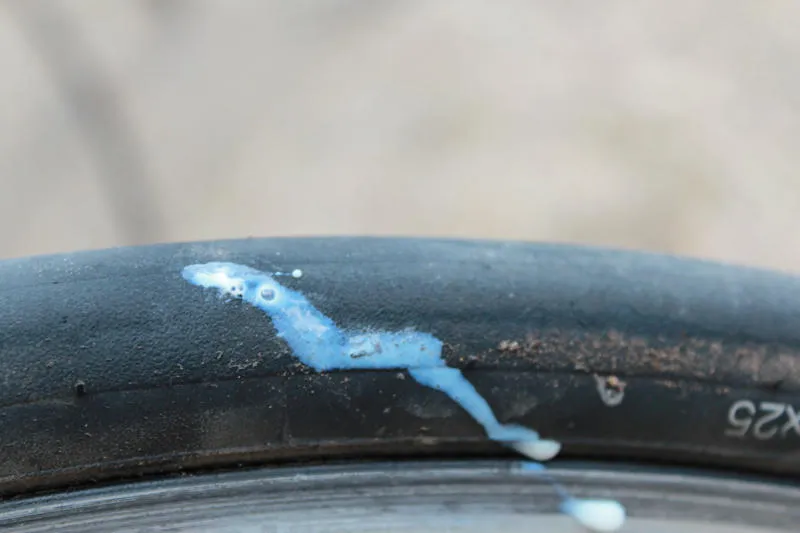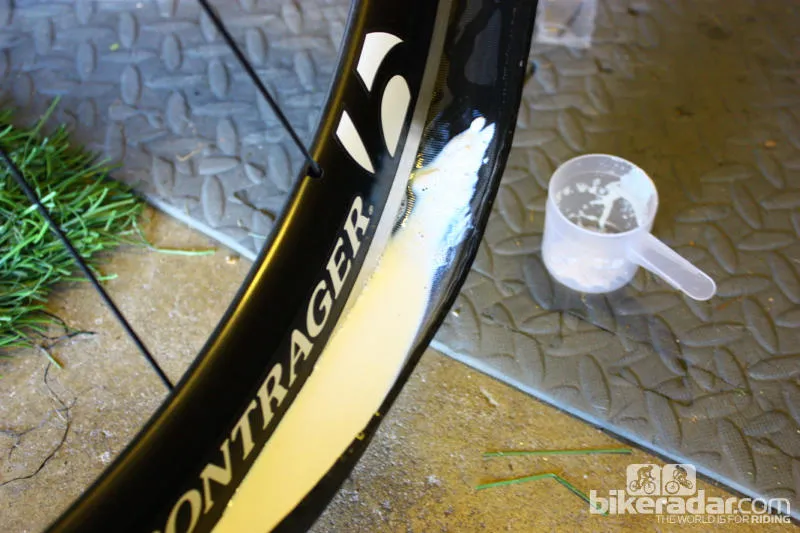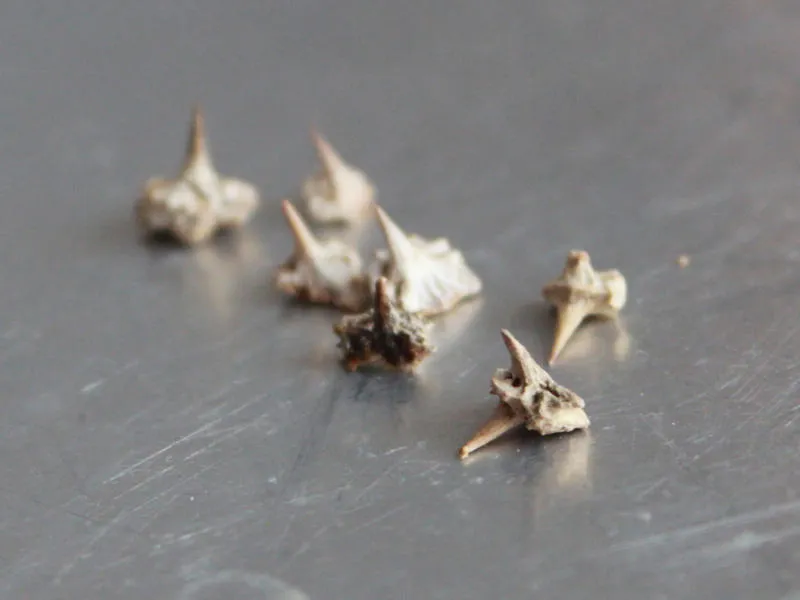Back when I was racing in college, my group of riding partners had what we called ‘the system’ to prevent flat tires while out training. Living in New Mexico where dried-up, dagger-like goathead thorns were the bane of every roadie’s existence in the fall and early winter. We would cut the beads off old clincher tires and jam them inside newer tires, creating a thick defensive layer of rubber. The system generally worked, but it rode like crap. What I wouldn’t have given then for road tubeless with sealant! But now, however, my overall feeling for this technology is distinctly meh. I just can’t get excited about it as the single solution for road tires.
A quick primer for the uninitiated:
- There are three types of road tires. Used in pro racing, a tubular is a self-contained unit that is glued onto the rim. The widely used clincher tire ‘clinches’ onto either side of the rim and uses an innertube to inflate. Virtually every road bike sold in the last 10 years came with clinchers. And now there is a tubeless style of tire, which clinches onto the rim but does not require an innertube, instead using sealant to form a air-tight seal with the rim and to quickly seal small punctures.
- Mountain bikers latched onto tubeless tires years ago for good reason. Tubeless allowed for lower air pressure and thus better grip and compliance — plus it virtually eliminated pinch flats. There is no going back to MTB innertubes.
- Sensing an opportunity, wheel and tire makers started pushing for road tubeless products in recent years, touting the same benefits that make the technology so great off-road. Unlike on MTB, however, I have never wanted to run very low air pressure in my road tires. I’ll drop 10 or 15 psi on some of the newer 25mm or even 27mm-wide tires, sure, but not enough to where I’m bottoming out on the rim.
The will to believe
Now I really wanted to be a fan of road tubeless, especially when cyclocross versions were introduced. Despite the insistence of many a magazine and website that you absolutely needed to buy tubulars to race ’cross, I wasn’t interested in that type of investment for a few goof-off races in the fall. ’Cross tubeless promised the low pressures and associated benefits of tubulars without the cost — plus you could swap road and ’cross tires around as needed on a single wheelset.
A single cyclocross race captured the highs and lows. Having hit a thorn or something similar right before the start of a race, I straddled my bike in the starting grid listening to air hiss out of my front tire. With 20 seconds before the gun went off, I lifted the front wheel and spun it, spraying my frame and the guy in front of me with white sealant. The gun fired, we took off, and the tire held. Hooray, tubeless! But towards the end of the race as I fatigued, I remounted a little too heavily and burped air out of the rear tire. Then it happened again. In the final corners I had to creep around the corners. Boo, tubeless!
Granted, tubeless tires, wheels and the all-important interface between the two has improved greatly in recent years. Even still, by my math, road tubeless has a score of 1-3, with quick flat fixes in the positive column being countered by uncertainty, general messiness and minor hassle in the negative.
Uncertainty. Yes, tubeless sealant can seal punctures on the fly. This can be a wonderful thing, especially in situations like when you’re the new guy on a group ride and you don’t want to ask people to wait. But there are always little questions in the back of your mind. How much air leaked out before it sealed? Is there still a slow leak? Will I be alright diving into this tight corner? I stopped to check it and it feels okay… but is it?
Messy. Every time you have to deal with road tubeless it’s a mess. If you take great care, installing new tires on new wheels can be done without too much spillage or leakage. But whenever you get a puncture or, worse, change tires, it’s going to look like pigeons were pooping through a ceiling fan — sticky, white splatter is everywhere. If you get the odd sidewall tear or something similar on the road that the sealant can’t fix, forcing you to pop in an inner tube and perhaps a boot — you’re going to need a sink afterwards. And perhaps a mop.
Hassle. For a recent tubeless test, I first needed to remove another set of tubeless tires. While some areas of the tire easily pushed free toward the center of the rim, other sections were absolutely cemented on. While somewhat encouraging as to the sealant’s effect while riding, the glue-like seal had me seriously considering reaching for a screwdriver for leverage. After finally getting the tires off and cleaning up the inevitable sealant slop on the floor and wheels, I carefully wiped down the inner rim. After battling to get the new tires on — tubeless tires are usually a tighter fit than clinchers — I attempted to air up and seat the tires. Pumping vigorously with a high-volume floor pump, I succeeded only in blowing sealant out of the tires and onto the floor. (I have had success seating some tire/wheel combinations with a pump.) So, I walked the wheels down the street to a friend who has a compressor. About 15 minutes later, after some rotating and shaking of the wheels, some more leaking, and some compressor noise, the tires were finally inflated. Situations like this make me wonder about the experience of new riders — or my wife!
You may chalk my gripes up to relative inexperience. I’ve ridden perhaps eight or nine road tubeless tires; the vast majority of my decades on bikes have been with clinchers and the occasional tubular. And I realize that roadies — myself included — often pooh-pooh new and unfamiliar technology. I can envision shop wrenches and even some of my coworkers rolling their eyes dismissively at some of my points above. But outside of the high-flat-prone areas, I just don’t see a convincing argument for road tubeless. Compared to bona fide game-changers like GPS, power meters or even breathable waterproof clothing, road tubeless just isn’t an earth-shaker.
Yes, you can save a few grams of rotational weight in a tubeless set-up, but if that’s the driver you can just buy ultra-light tubes. I can feel a difference in a good, compliant tire versus a lesser, stiffer tire. I can feel a difference in 100psi versus 80psi. And I can feel a difference in a 27mm tire versus a 23mm-wide tire. But I honestly can’t tell the difference on the road between a tubeless tire and clincher tire of the same width.
Back to the New Mexico college days, our ‘system’ tires felt lousy, almost like riding solid or plastic tires, yet conditions necessitated the solution. Now tubeless tires in my mind offer the same solution, but with a vastly improved ride quality. But for most roadies in most places — including myself in Colorado, California and elsewhere — this isn’t the case. And outside of the quick-flat fix, I just don’t see an big advantage.
If your next road bike comes with a set of tubeless wheels, great — you can run them tubeless or clincher. But if it doesn’t, your riding life will still be just fine.
What has been your experience with road tubeless? Sound off below.




